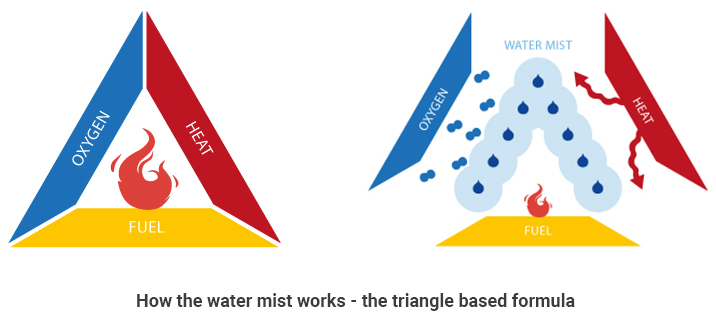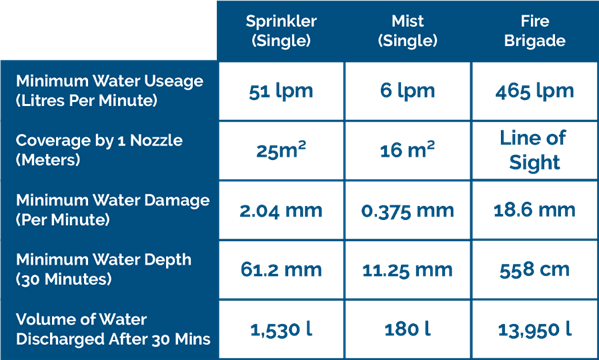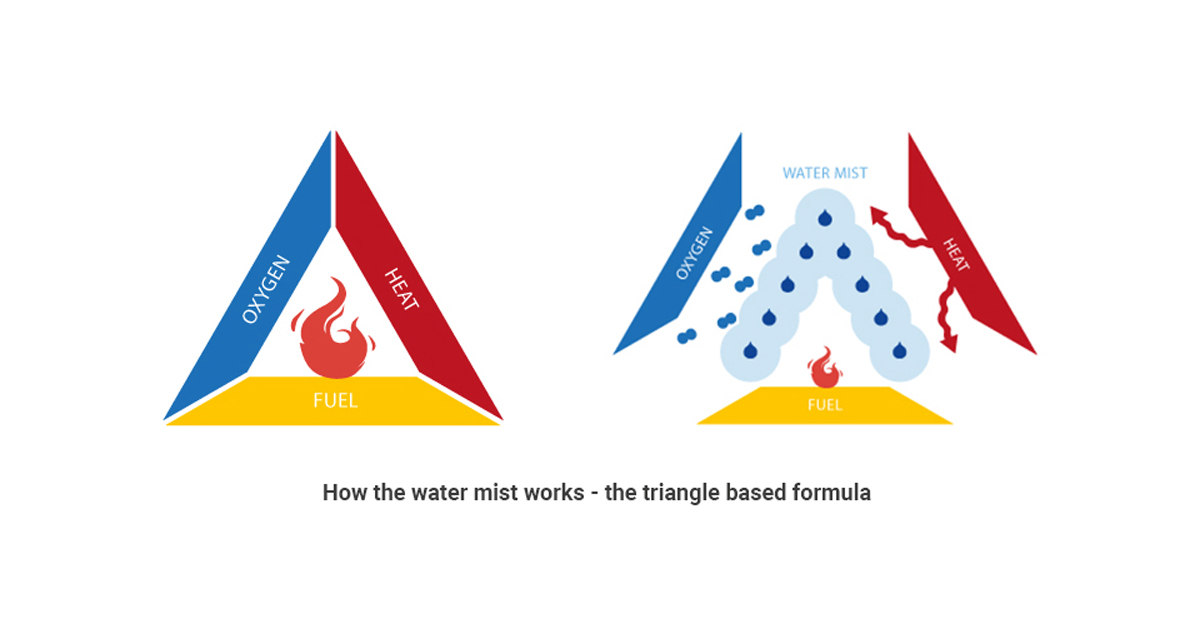Fire sprinkler systems save lives and property
It is becoming clearer that developers and individual home owners now seem to see automatic fire sprinkler systems as a crucial addition to fire safety, along with smoke and fire alarms.
According to recent reports “the civilian death rate per 1,000 reported home fires was 81 percent lower in homes with sprinklers installed than in homes with no automatic extinguishing system”.
So How Do Mist Systems Work?
Water mist systems work by emitting a vapor to cool the room temperature and displace oxygen with steam. Traditional fire sprinkler heads operate to put out or shorten the growth of fires by drenching them and the surrounding area with water. Both systems use water but in different ways.
The main difference is the size of the water droplets. Because of its design, a water mist system releases water droplets less than 1,000 microns in diameter (roughly five times smaller than the water droplets that a traditional sprinkler system discharges). Once a water mist system activates, the released droplets evaporate and turn into steam, and that steam is what muffles the fire. This is due to the increase in the volume of the water droplets as they evaporate, the oxygen is displaced at the source of the fire, and this extinguishes the flames.”
A fire needs a combustible material (the fuel), heat, and oxygen to thrive. Experts refer to this as the Fire Triangle. Traditional sprinkler systems only tackle the heat and surface of the fuel by dousing the affected area with a concentrated stream of water, whereas a water mist system suppresses all three aspects simultaneously.
A water mist fire protection system is designed with something called the “local inerting effect” in mind. Basically, the water mist system emits a fine spray to displace the oxygen levels surrounding the fire. When water evaporates, it expands approximately 1700 times, so one litre of water turns into 1.7 cubic meters of vapor. Not only does that vapor cool the room and prevent reignition, but it also causes the oxygen levels surrounding the fire to drop to below 12 percent, which will extinguish any flame.
However, and very important for residents in a fire, the oxygen content further away from the fire is well above 12 percent, which means that there is enough oxygen available for human consumption. “That’s fantastic news for any person trapped in a fire waiting for the fire services”.
What about smoke control?
Water mist fire suppression systems will efficiently cool the smoke layer, preventing the hot gas layer from further spreading the fire. The mist will also clean out the smoke particles. Water mist drifts with the airflow and therefore is not dependent on hitting the fire directly. Because of this, water mist systems can control and extinguish concealed fires.
Then there’s the aspect of water damage. When it comes to using a water mist system, less water means less water damage. Less water damage means less debris that needs to be hauled away and disposed of, and less debris-hauling means less downtime for tenants and landlords who often have to forgo rent. (See Table Below)
When it comes to retrofitting a property with a sprinkler system, the technology for a water mist system is easily customizable. It features lightweight, bendable hydraulic tubing that is more adaptable than the network of pipes used in traditional sprinkler systems. These tubes make installation easier, especially in older buildings with smaller spaces.
This means simply that High-pressure water mist systems also take up less volume than traditional sprinklers as they consist of small tubing that is quick to install and easy to manoeuvre around unique angles, corners, and architectural obstructions. The tube network is small enough to be hidden from view by using a variety of design elements, such as crown moulding to preserve the building aesthetics.
When it comes to water as an agent for fire protection, water mist systems require a tenth of water used by traditional fire sprinkler systems, making them more environmentally friendly and cost-effective as well in the long run.
Water mist systems tackle all three components of the fire triangle, whereas the traditional sprinklers only affect two. Plus, water mist systems inflict less damage than their sprinkler counterparts. This system is quickly gaining popularity and it’s clear to see why given also the lower cost of installing.


A fire occurs when all three of these components react together in time and space.
A fire can be put out, prevented or the impacts reduced by removing, reducing or separating these elements.




